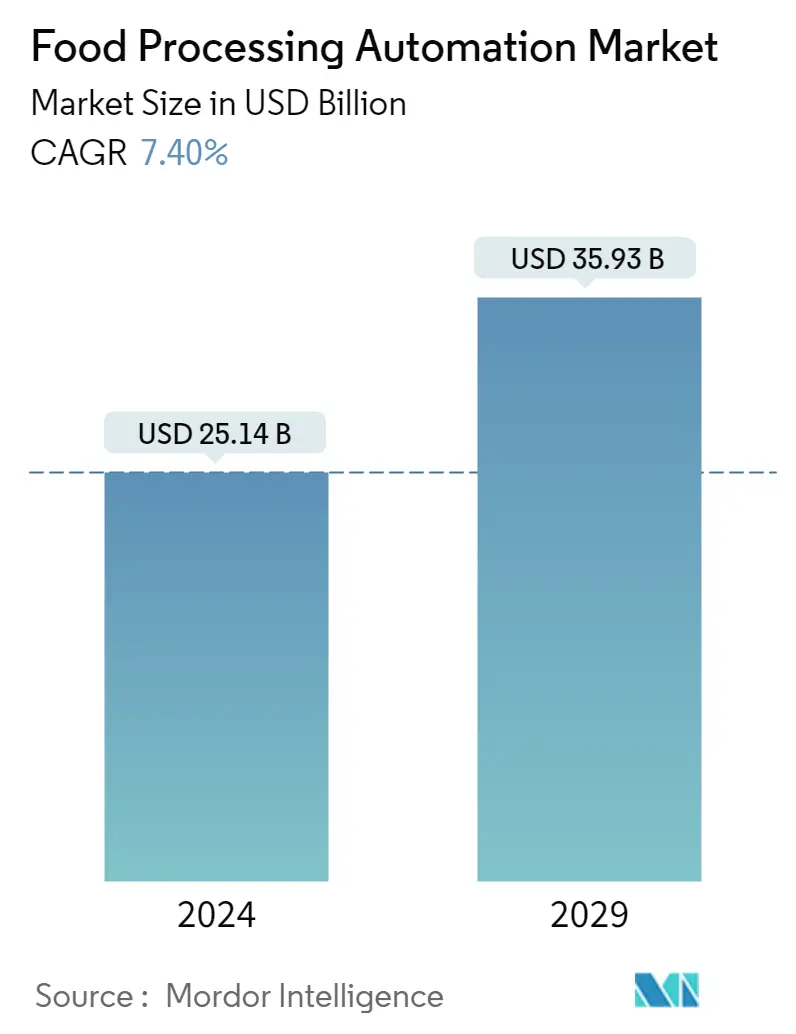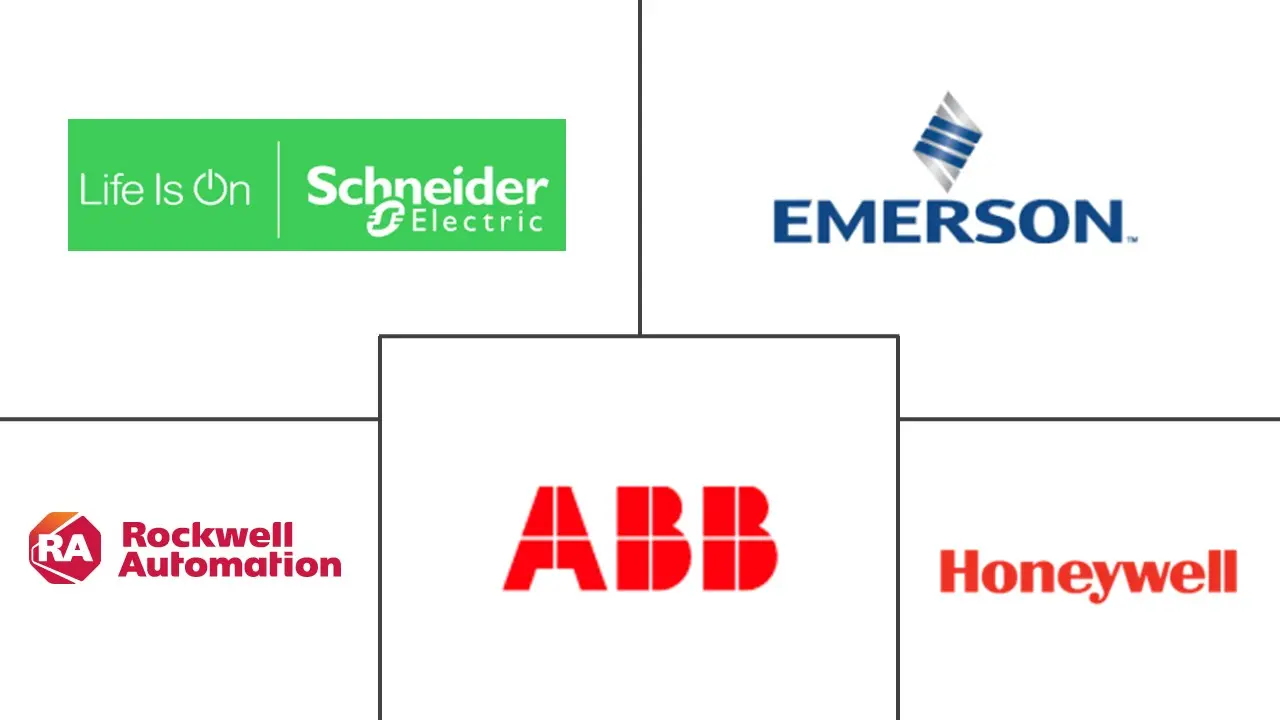Market Size of Food Processing Automation Industry

| Study Period | 2019 - 2029 |
| Market Size (2024) | USD 25.14 Billion |
| Market Size (2029) | USD 35.93 Billion |
| CAGR (2024 - 2029) | 7.40 % |
| Fastest Growing Market | Asia Pacific |
| Largest Market | North America |
Major Players
*Disclaimer: Major Players sorted in no particular order |
Need a report that reflects how COVID-19 has impacted this market and its growth?
Food Automation Market Analysis
The Food Processing Automation Market size is estimated at USD 25.14 billion in 2024, and is expected to reach USD 35.93 billion by 2029, growing at a CAGR of 7.40% during the forecast period (2024-2029).
Automation has been adopted in manufacturing plants for the last 50 years, and it is increasing day by day. The food industry has become one of the fastest-growing segments of plant automation. The food industry is growing tremendously and is one of the major sectors contributing to GDP.
- The demand for processed goods is increasing, with increased buying power and changing lifestyles. This has made it necessary for food manufacturers to implement automation to improve the processing rate to meet consumers' demands. Furthermore, the rapid development of computer technology, dynamic changes in consumers' preferences, and regulatory bodies have boosted the need for food quality and safety. This has resulted in the growing adoption of automated systems in the food industry.
- Automation provides direct and indirect benefits to the production line, including increased waste reduction and speed. Indirect benefits can range from increased workplace safety and precision to longer operational hours at a lower total budget; vendors operating in the market are increasingly focusing on adopting these solutions to drive efficiency and their operational capabilities.
- Food processing has improved the palatability and shelf-life of foods. Processed food items undergo at least some processing and thus include moderately and highly processed foods. Advancements in the food processing industry, innovation in processing technology, and continuous growth in the requirement for processed food are expected to support the development of food and beverage processing equipment.
- The installation and acquisition cost of a control system for an intelligent factory represents half of the total cost during its lifetime. Additionally, the frequent changes in networking and technology also result in significant cost increases, which is much more than the initial investment, further restraining the adoption. Even significantly low adoption among SMEs, especially in developing countries, like Brazil, that cannot bear the product costs, is restraining the market's growth.
- The COVID-19 pandemic and its associated lockdown limitations caused disruptions in manufacturing operations and supply chains worldwide. Under these constrained circumstances, multiple industries worldwide witnessed a massive decline in revenue and profits, resulting in an overall slowdown in investment activities, especially related to new technology adoption and expansion.
- In the post-COVID-19 scenario, with the economy returning to normalcy and vendors increasingly focusing on adopting automation and advanced digital solutions, the studied market is expected to witness upward growth during the forecast period.
